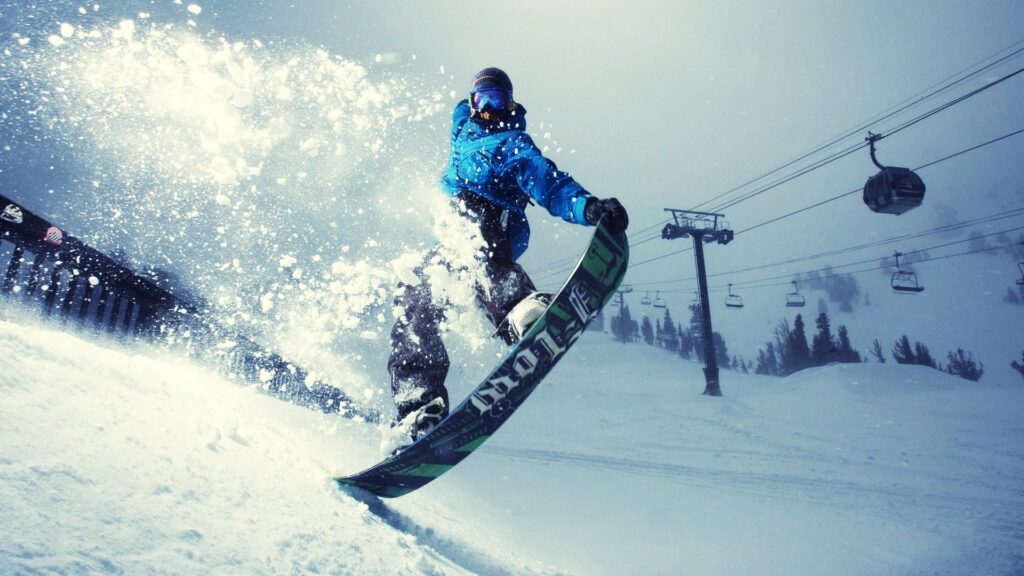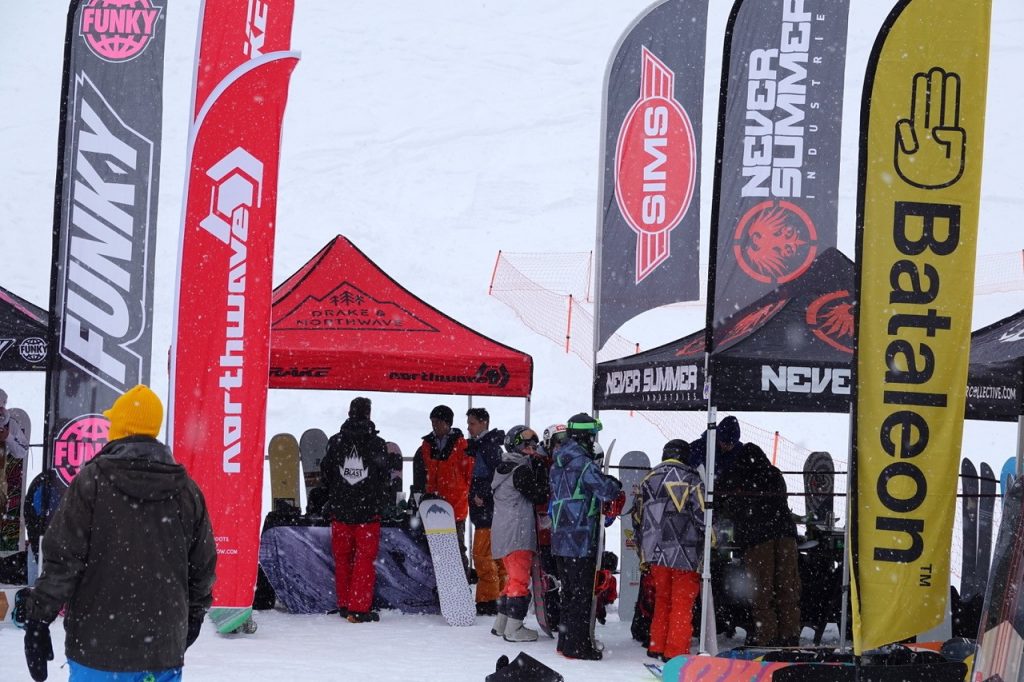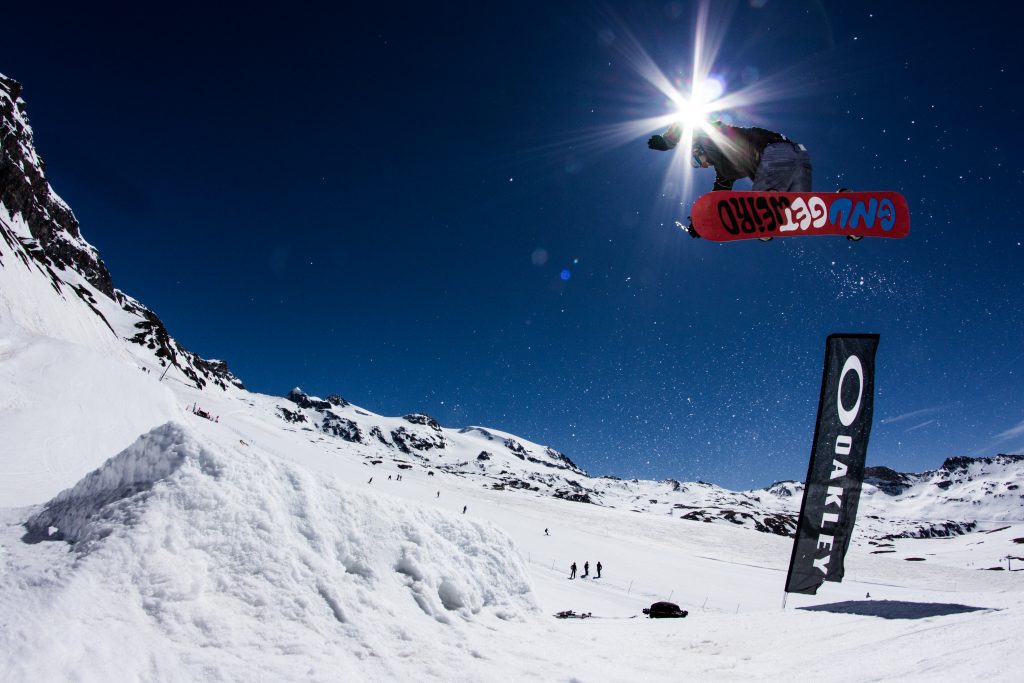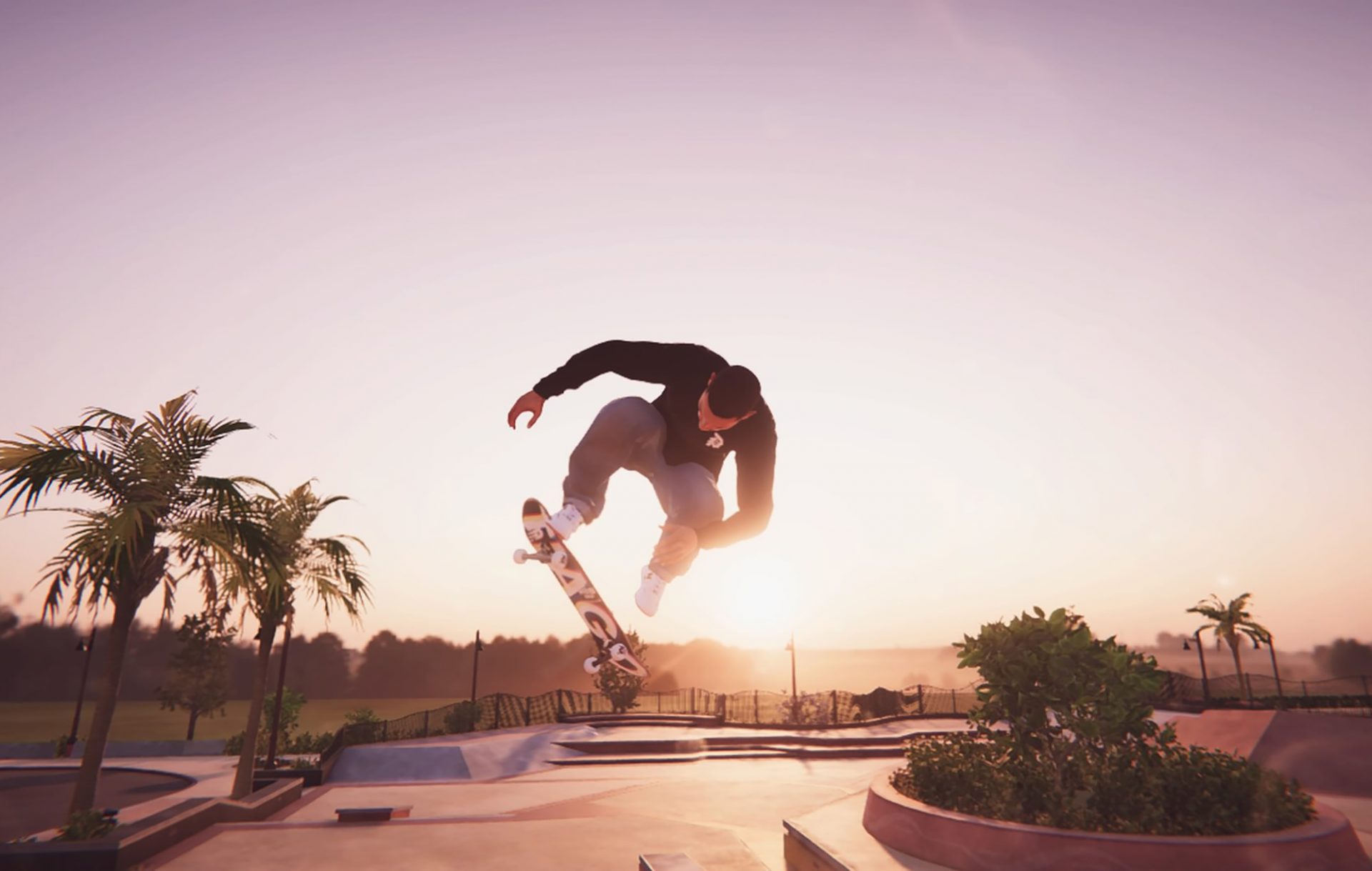Snowboarding, a thrilling winter sport that has captured the hearts of enthusiasts worldwide, has a fascinating history that stretches back to its humble beginnings. Born out of the desire for a new and exciting way to navigate snowy slopes, snowboarding has evolved from the experimental days of “snurfing” to becoming a prominent fixture in the Winter Olympic Games. This article delves into the captivating journey of snowboarding, exploring its origins, pivotal moments, and the remarkable ascent that led it to the grand stage of the Olympic competition.
Snowboarding’s Roots

In the late 1960s and early 1970s, a group of adventure seekers sought a novel way to experience the joys of winter sports. Enter “snurfing,” a term coined by combining “snow” and “surfing.” Originating in Michigan, snurfing involved riding a single board that resembled a hybrid between a skateboard and a ski. This early form of snowboarding laid the foundation for the sport, providing the initial spark that would ignite a revolution in winter recreation.
The Advent of Modern Snowboarding
As the 1970s progressed, snowboarding underwent a transformative phase, with pioneers like Jake Burton Carpenter and Tom Sims contributing to the refinement of equipment and techniques. Burton, often hailed as the “father of snowboarding,” played a pivotal role in popularizing the sport by introducing the first production snowboard. Simultaneously, Sims developed the first metal-edged board, enhancing control and maneuverability on the slopes. These innovations marked the transition from snurfing to modern snowboarding and set the stage for the sport’s widespread acceptance.
Challenges and Controversies
Despite its growing popularity, snowboarding faced resistance and controversy in the 1980s and early 1990s. Many ski resorts initially banned snowboarders, citing safety concerns and conflicts with traditional skiing norms. This period witnessed a cultural clash between skiing and snowboarding communities. However, the perseverance of snowboarders and the realization of its economic potential eventually led to the integration of snowboarding into mainstream winter sports culture.
The Rise to Olympic Recognition
The turning point for snowboarding came in 1998 when it made its debut as an Olympic sport at the Winter Games in Nagano, Japan. The inclusion of snowboarding in the Olympics marked a monumental achievement for the sport, providing a global platform for athletes to showcase their skills and pushing the boundaries of what was possible on a snowboard. Since then, snowboarding has become a marquee event at the Winter Olympics, captivating audiences with its high-flying tricks and intense competition.
Innovation in Riding Styles
Snowboarding’s evolution is not limited to its acceptance as an Olympic sport; it extends to the continuous innovation in riding styles and techniques. From the adrenaline-pumping halfpipe runs to the heart-stopping big air jumps, snowboarders constantly push the limits of what can be achieved in the snow. The evolution of various riding styles has not only added diversity to the sport but has also inspired a new generation of riders to express themselves creatively on the slopes.
The Global Impact of Snowboarding
Beyond its Olympic glory, snowboarding has become a cultural phenomenon with a global impact. From the snow-capped peaks of the Alps to the powdery slopes of the Rocky Mountains, snowboarding has transcended geographical boundaries, resonating with individuals of all ages and backgrounds. The unique blend of athleticism, style, and camaraderie has turned snowboarding into more than just a sport; it’s a lifestyle embraced by a vibrant and passionate community.
The Technology Revolution in Snowboarding
As snowboarding entered the 21st century, another dimension of its evolution unfolded – the integration of technology. With advancements in materials, design, and manufacturing processes, snowboard technology has undergone a revolution, enhancing performance and opening up new possibilities for riders.
One of the most significant technological innovations in snowboarding is the development of smart boards. These boards come equipped with sensors and embedded technology that can provide real-time feedback on a rider’s performance. From tracking airtime during jumps to analyzing carving techniques, smart boards have transformed the way athletes train and refine their skills. This intersection of sports and technology has not only elevated the level of competition but has also made snowboarding more accessible to enthusiasts eager to improve their abilities.
Furthermore, the rise of virtual reality (VR) and augmented reality (AR) has extended its influence into the realm of snowboarding. Imagine a snowboarder gearing up with a pair of AR goggles that overlay a virtual terrain onto the actual slope. This immersive experience allows riders to navigate through virtual obstacles and terrains, adding a new layer of excitement to the sport. VR simulations have become valuable tools for both training and entertainment, enabling riders to visualize and practice complex tricks in a controlled virtual environment before attempting them on the snow.
Environmental Awareness and Sustainable Practices

As snowboarding has grown in popularity, so too has the awareness of its environmental impact. The sport relies heavily on pristine mountain environments, and climate change poses a significant threat to the availability of consistent snowfall. In response, the snowboarding community has increasingly embraced environmental sustainability.
Sustainable snowboard manufacturing has become a focal point, with companies investing in eco-friendly materials and production processes. From recycled materials for board construction to minimizing carbon footprints in transportation, the industry is actively working towards reducing its environmental impact. Additionally, snowboarding events and competitions have incorporated eco-friendly practices, such as waste reduction initiatives and promoting responsible tourism in mountain communities.
Social Media and the Rise of Snowboarding Influencers
The digital age has ushered in a new era for snowboarding, with social media playing a pivotal role in shaping the culture and expanding the sport’s reach. Riders and enthusiasts now have platforms to share their experiences, tricks, and perspectives with a global audience. Social media has not only connected the snowboarding community but has also given rise to a new breed of influencers.
Snowboarding influencers, with their charismatic personalities and jaw-dropping stunts, have garnered substantial followings on platforms like Instagram, YouTube, and TikTok. These individuals not only showcase the sport’s excitement but also contribute to its evolution by introducing new tricks and pushing the boundaries of what is considered possible. The digital landscape has become a stage for creativity, allowing riders to express their unique styles and inspire others to join the snowboarding movement.
Adaptive Snowboarding and Inclusivity
The evolution of snowboarding extends beyond technology and environmental consciousness to inclusivity and accessibility. Adaptive snowboarding has emerged as a powerful movement, providing individuals with physical disabilities the opportunity to experience the thrill of riding down snow-covered slopes.
Adaptive snowboarding involves the use of specially designed equipment and adaptive techniques to accommodate a range of abilities. This aspect of the sport has gained traction through organizations and events dedicated to adaptive snowboarding, fostering a more inclusive and diverse community. The sight of adaptive athletes gracefully navigating the mountain is a testament to the transformative power of snowboarding and its ability to break down barriers.
Snowboarding as a Lifestyle
Beyond the competitions, the technology, and the environmental initiatives, snowboarding has become a way of life for many. The culture surrounding the sport has evolved into a vibrant tapestry of art, music, and fashion, with snowboarders expressing their individuality both on and off the slopes.
Artists and designers collaborate with snowboard brands to create visually stunning board graphics, turning each board into a unique canvas. Music festivals and events dedicated to snowboarding culture have become annual gatherings, where enthusiasts celebrate their shared passion. The fashion associated with snowboarding has also evolved, with riders showcasing their style through a mix of functional and trendy apparel that reflects the dynamic nature of the sport.
Emerging Trends: Snowboarding in the Metaverse
As we navigate the ever-evolving landscape of snowboarding, one intriguing avenue that has captured the imagination of enthusiasts is the potential integration of the sport into the metaverse. The metaverse, a virtual space where users can interact with a computer-generated environment, presents a novel opportunity for snowboarding to transcend the physical realm.
Imagine strapping on a pair of virtual reality goggles and entering a digital snow-covered mountain, where riders can experience the exhilaration of carving down slopes, performing gravity-defying tricks, and even engaging in virtual competitions. This metaverse extension could provide an immersive experience for individuals who may not have access to snow-covered mountains or those looking to ride in fantastical, unreal terrains. While this concept is still in its infancy, the metaverse could reshape how we perceive and engage with snowboarding in the coming years.
Women in Snowboarding: Breaking Barriers
Another exciting development in the world of snowboarding is the increasing prominence of women in the sport. While female snowboarders have been making significant contributions for years, there’s a growing recognition of their achievements and a concerted effort to break down gender barriers. Women are not only excelling in traditional snowboarding disciplines but are also pushing the boundaries of what is possible.
Female riders are gaining visibility in big air competitions, halfpipe events, and backcountry riding. This shift is not only reflective of the talent and dedication of women in the sport but also signals a broader cultural shift towards inclusivity and gender equality in snowboarding. As more opportunities and recognition become available for female athletes, the future of snowboarding is destined to be more diverse and representative of the entire spectrum of talent within the community.
Global Collaboration and Cross-Cultural Influences

In the interconnected world of today, snowboarding has become a global phenomenon with influences transcending geographical boundaries. The sport’s growth is not limited to traditional winter sports regions, as riders from diverse cultures bring their unique styles and perspectives to the slopes. This global collaboration is fostering a rich tapestry of snowboarding cultures, with riders from different parts of the world influencing and inspiring one another.
International events and competitions showcase the diversity within the sport, creating a platform for riders to learn from each other and push the boundaries of creativity. This cross-cultural exchange not only enriches the snowboarding community but also contributes to the sport’s evolution by incorporating a myriad of influences and approaches.
The Role of Artificial Intelligence in Training
Looking ahead, the integration of artificial intelligence (AI) into snowboarding training regimens promises to revolutionize how athletes prepare for competitions. AI applications could analyze a rider’s performance, identify areas for improvement, and provide personalized training programs. From refining techniques to optimizing physical conditioning, AI could offer a tailored approach to help athletes reach their full potential.
Imagine a snowboarder receiving real-time feedback on their stance, speed, and precision, allowing them to make instant adjustments on the slopes. AI-powered simulations could replicate different snow conditions, enabling athletes to practice and adapt to a variety of scenarios. This intersection of technology and athletics holds the potential to elevate the overall skill level of snowboarders and contribute to the continued progression of the sport.
Conclusion
As we contemplate the future of snowboarding, the amalgamation of emerging trends, technological advancements, and cultural shifts paints a dynamic and vibrant picture. The sport, born out of a desire for adventure and self-expression, continues to evolve, embracing innovation while staying true to its core values. From the immersive possibilities of the metaverse to the breaking down of gender barriers and the global exchange of influences, snowboarding remains a testament to the enduring spirit of exploration and creativity.
The journey from snurfing to Olympic glory has been nothing short of remarkable, and the chapters yet to be written promise even more excitement and evolution. Whether carving down physical slopes or navigating the virtual terrains of the metaverse, snowboarding persists as a dynamic force, shaping not only the winter sports landscape but also influencing broader cultural narratives. As we strap in for the ride ahead, one thing is certain – the evolution of snowboarding is a perpetual adventure, an ever-unfolding tale of innovation, community, and the boundless pursuit of the perfect ride.

